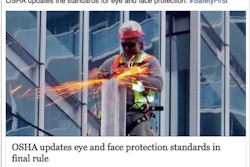Note: This special report was published by Big Iron Dealer‘s sister news outlet on the commercial truck side, Successful Dealer. While the details included in this report are specific to commercial truck dealerships, some of the takeaways can be applied across multiple dealership industries. This article is Part II of a three-part series. To read Part I, please CLICK HERE.
After both parties have signed a NDA and hashed out a rough outline for a transaction, the seller provides recent financial statements and summary-level corporate information to the purchaser. This documentation is then evaluated by the purchaser’s acquisition team and legal counsel, who use it to create a purchase offer, included in a letter of intent (LOI).
In the dealer market, most prices featured in a LOI are established using a formula that measures the profits of a prospective purchase over a given period.
Because it is non-binding, Buelow says an LOI “can be developed fairly quick”—but it doesn’t have to be.
Kevin Tallman, president at Tallman Group, says his business prefers “a fairly lengthy LOI” built on exhaustive early research. Tallman says the extra effort put in at the beginning of the transaction minimizes roadblocks found in the later stages.
Additionally, in most transactions, buyers have the option to request an exclusivity period within a LOI, which requests a seller not enter other sales discussions with another potential purchasers during ongoing negotiations. Designed to prohibit a seller from ‘shopping around’ possible offers, these exclusivity agreements are meant to build trust during a transaction.
In transactions between two eager and willing partners this step can be uneventful. But when one or both choose to dispute the evaluation of the other, transactions can bog down, stalling for months and sometimes even collapsing.










